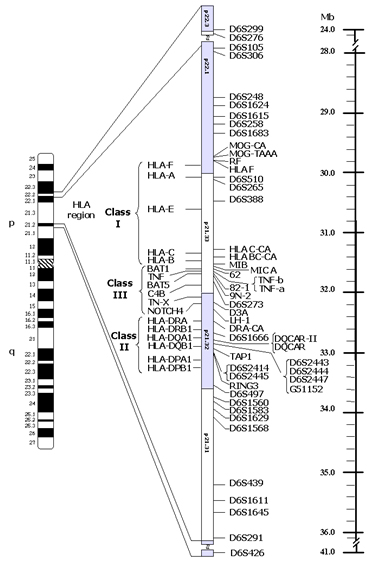STR haplotyping for family members (father, mother and affected child) is performed prior to preimplantation HLA typing, in order to identify the most informative STR markers of the HLA complex to be used in the following clinical PGD cycles. A panel of 50 different STR markers (Figure 1) is studied during the set-up phase, to ensure a sufficient informativity in all families. For each family, only heterozygous markers presenting alleles not shared by the parents are selected, so that segregation of each allele and discrimination of the four parental HLA haplotypes can be clearly determined.
Informativity is also evaluated for STR markers linked to the gene regions involved by mutation, used to avoid a possible misdiagnosis due to the well known allele drop-out (ADO) phenomena, and for STR markers used to determine the copy number of chromosomes 21, 18, 13, X and Y, applied for patients of advanced reproductive age.

Figure 1
Polymorphic STR markers located throughout the HLA region, on chromosome 6, used in preimplantation HLA matching procedure.
The STRs are ordered from telomere (top) to centromere (bottom) and their position is compared with genes of the HLA complex.
D6S299, D6S276 and D6S426 markers are located outside the HLA region.
All STR markers are di-nucleotide repeats, except for RF that is tri-nucleotide repeats, and MOG-TAAA, D6S2414, D6S2415 and D6S497 that are tetra-nucleotide repeats. Mb = Mega bases.